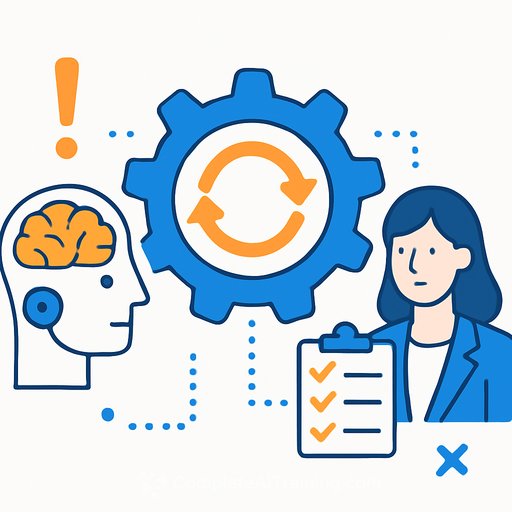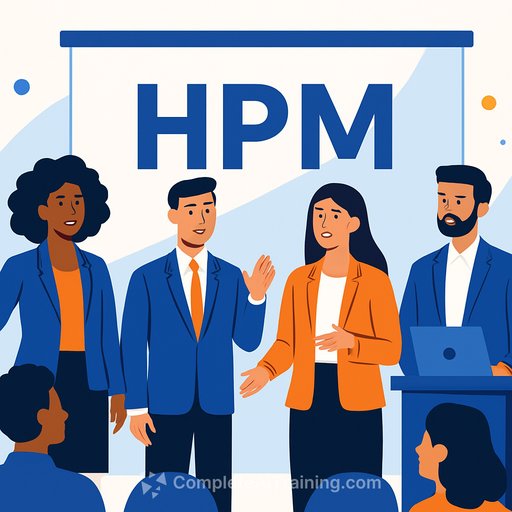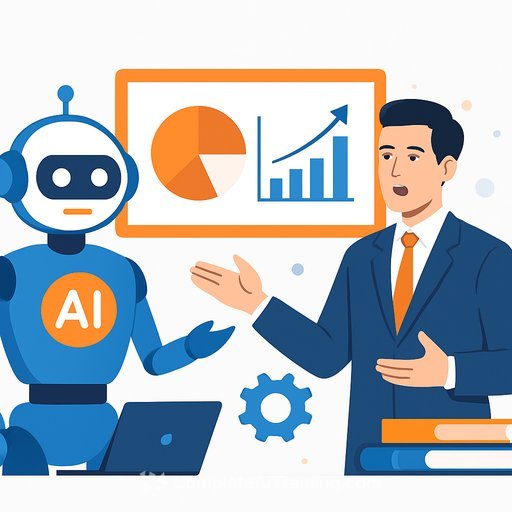Flawed Expectations: Unpacking the Potential of AI in HR
AI won't fix broken HR processes. It will make the good ones faster, and the bad ones louder. The opportunity is real, but the path is boring: clear use cases, tight guardrails, and measurable outcomes.
If you expect magic, you'll get noise. If you expect decision support and automation of repetitive work, you'll get results.
What HR Expects vs. What AI Delivers
- Expectation: AI will replace recruiters and HRBPs. Reality: AI handles grunt work-screening, summarizing, drafting-so people can handle judgment, context, and trust.
- Expectation: One model will do everything. Reality: You'll use a mix: vendor-embedded AI, general chat models, and niche tools for sourcing, interviews, and analytics.
- Expectation: Perfect accuracy. Reality: Useful, not perfect. You need reviews, audits, and a human in the loop.
- Expectation: Immediate ROI. Reality: Small pilots, simple metrics, steady rollout. Weeks to value, months to scale.
Where AI Actually Works in HR Today
- Job descriptions: Draft inclusive, skills-based JDs from role profiles and competency libraries.
- Sourcing: Generate Boolean strings, summarize resumes, and surface internal candidates by skills, not titles.
- Screening support: Structure candidate summaries, flag must-have gaps, and prep interview question sets.
- Interview efficiency: Transcribe, timestamp key moments, and produce structured notes for panel review.
- Offer guidance: Suggest ranges within comp bands based on level, location, and equity rules.
- Onboarding: Auto-create checklists, day-1 docs, and role-specific learning paths.
- Performance + feedback: Turn messy notes into clear drafts tied to competencies and goals.
- L&D personalization: Map courses to skills, seniority, and performance data. Recommend next steps, not catalogs.
- Policy and HR ops: Draft policy changes, answer FAQs with a vetted knowledge base, and route exceptions.
- Workforce planning: Turn raw HRIS data into clean headcount, attrition, and skills snapshots with commentary.
Risks You Can't Ignore
- Bias: Historical data can encode unfair patterns. Test, monitor, and document mitigation.
- Privacy: Do not feed personal or confidential data into public models. Use enterprise controls and DLP.
- Compliance: Track local rules on automated employment decisions and disclosures. See the EEOC's AI guidance.
- Security: Vendor data retention, model training on your inputs, and access logs matter. Verify, don't assume.
- Hallucinations: Models can fabricate citations or facts. Require sources or link back to your knowledge base.
- Vendor dependence: Avoid black boxes. Ensure auditability, export, and fallback processes.
A Simple Adoption Playbook
- 1) Pick one process with high volume and clear rules: JDs, candidate summaries, or policy Q&A.
- 2) Define success: hours saved per week, quality signals (e.g., hiring manager satisfaction), and error rate.
- 3) Build guardrails: approved prompts, data scopes, review steps, and red flags that force human review.
- 4) Pilot with 3-5 users for 2-4 weeks. Log time saved and defects. Keep a simple feedback form.
- 5) Document the workflow in plain language. Record a 5-minute screencast. Make it easy to adopt.
- 6) Scale gradually: add one adjacent use case, not five. Maintain a backlog and a change log.
Data, Governance, and Change
AI is only as useful as your data. Clean job architectures, skills libraries, and compensation bands multiply the value.
Write a short AI policy: approved tools, acceptable data, review steps, and escalation. Train managers to ask, "What did the model assume?"
Adopt a risk framework so audits aren't a fire drill. The NIST AI Risk Management Framework is a solid baseline.
Metrics That Matter
- Recruiting: time-to-first-screen, time-to-offer, hiring manager satisfaction, candidate drop-off, recruiter capacity gain.
- Quality: 90-day retention, on-target productivity, interview score consistency.
- L&D: time-to-course, skill attainment signals, internal mobility rate.
- Ops: policy response time, accuracy rate, case deflection from HR helpdesk.
What to Ask AI Vendors
- Model transparency: Which models? How often updated? Can we bring our own?
- Data usage: Are our inputs used to train others? Retention period? Regional storage?
- Bias + testing: How do you measure and reduce bias? Can we see reports?
- Security: SOC 2, ISO 27001, SSO, RBAC, audit logs, breach process.
- Controls: Prompt templates, content filters, human-in-the-loop checkpoints.
- Exit plan: Data export, API access, and switching costs.
- ROI model: Time saved per task, accuracy gains, and customer benchmarks.
Skills Your HR Team Needs This Year
- Prompt writing: Clear instructions, constraints, examples, and review criteria. Practice beats theory. For structured help, see prompt engineering resources.
- Process design: Map steps, decide where AI helps, and where humans decide.
- Data literacy: Understand inputs, bias sources, and what "good" looks like in your metrics.
- Compliance basics: Know disclosure requirements and documentation standards.
- Experimentation: Small tests, clear measures, fast iteration. Consider curated options by role at Complete AI Training.
Bottom Line
AI in HR is useful, but it isn't a shortcut to better judgment. Fix the process, then add the model.
Start small, measure aggressively, and keep a human in the loop. That's how you turn expectations into outcomes.
Your membership also unlocks:






